
Andriasa is a genus of moths in the family Sphingidae first described by Francis Walker in 1856.

Chloroclanis is a genus of moths in the family Sphingidae, containing one species, Chloroclanis virescens, which is known from forest from west Africa to Angola, the Congo, Uganda and western Kenya and Tanzania.

Microclanis is a genus of moths in the family Sphingidae, containing one species, Microclanis erlangeri, which is known from arid bush from central Tanzania to eastern and northern Kenya, Ethiopia and Somalia.

Rhadinopasa is a monotypic moth genus in the family Sphingidae erected by Ferdinand Karsch in 1891. Its only species, Rhadinopasa hornimani, was first described by Herbert Druce in 1880. It is known from lowland forest from Gabon, Cameroon and the Central African Republic to the Democratic Republic of the Congo to Uganda and Tanzania.
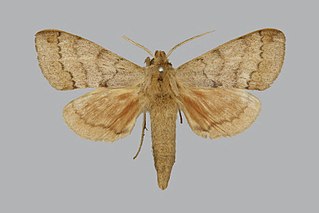
Pseudandriasa is a monotypic moth genus in the family Sphingidae erected by Robert Herbert Carcasson in 1968. Its only species, Pseudandriasa mutata, described by Francis Walker in 1855, is known from KwaZulu-Natal in South Africa.
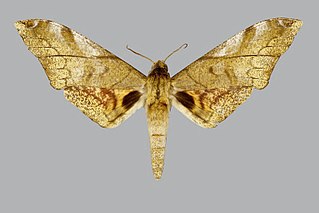
Platysphinx constrigilis is a moth of the family Sphingidae first described by Francis Walker in 1869. It is known from Africa.

Polyptychus paupercula is a moth of the family Sphingidae. It is known from forests from Liberia to Uganda.
Neopolyptychus serrator is a moth of the family Sphingidae. It is known from forests from the Congo to Uganda and western Kenya. It is also known from Cameroon.

Pseudoclanis occidentalis is a moth of the family Sphingidae. It is known from Sierra Leone, Ivory Coast, Ghana, Cameroon, Gabon, the Central African Republic and Kenya.
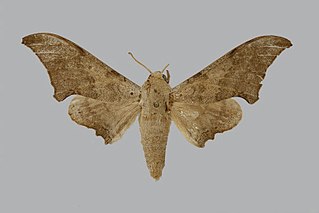
Falcatula cymatodes is a moth of the family Sphingidae. It is known from lowland forests in Ivory Coast, Ghana, Nigeria, Cameroon, Gabon, Uganda, and the Central African Republic.

Rufoclanis rosea is a moth of the family Sphingidae first described by Herbert Druce in 1882. It is known from forests in Burkina Faso, Ghana, Cameroon, Gabon, the Central African Republic, Tanzania and Uganda.

Rufoclanis numosae, the wavy polyptychus, is a moth of the family Sphingidae. The species was first described by Hans Daniel Johan Wallengren in 1860. It is known from dry bush and arid savanna in much of eastern and southern Africa.
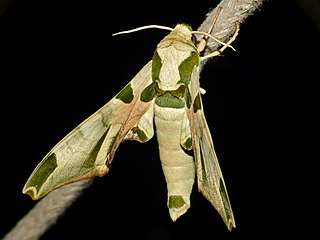
Batocnema africanus is a moth of the family Sphingidae. It is known from open woodland and savanna from north-eastern South Africa to Zimbabwe, Tanzania and the Kenya coast.

Phylloxiphia karschi is a moth of the family Sphingidae. It is known from Cameroon, Gabon, Democratic Republic of the Congo and Uganda.

Antinephele marcida is a moth of the family Sphingidae. It was described by William Jacob Holland in 1893, and is found from forests from Cameroon to Uganda and western Kenya.
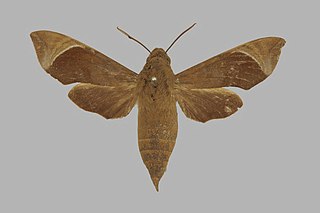
Temnora albilinea is a moth of the family Sphingidae. It is known from forests from Cameroon to Angola, Congo, Uganda, Kenya and Tanzania.

Temnora zantus is a moth of the family Sphingidae. It is known from forests in Congo and Uganda.

Nephele monostigma is a moth of the family Sphingidae. It is known from highland forests in the Cameroon, Uganda and Kenya.

Nephele bipartita is a moth of the family Sphingidae. It is known from lowland forest and heavy woodland from West Africa to the coast of Kenya and Tanzania and to Malawi and Mozambique.

Nephele rosae is a moth in the family Sphingidae. It is endemic to Africa.



















